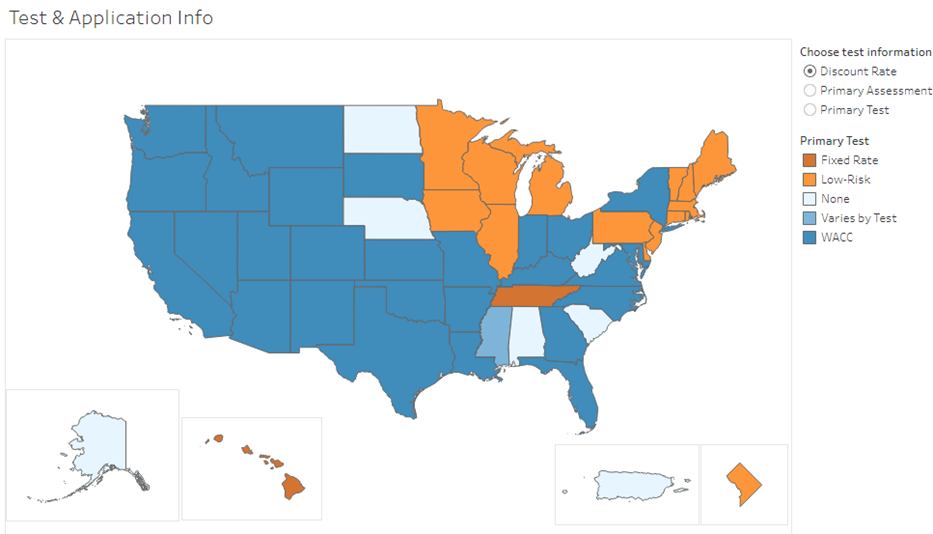Database of Screening Practices- Refreshed!
(Continued from NESP Quarterly June, 2022)
The Database of Screening Practices (DSP) is an open-source resource that provides energy efficiency cost-effectiveness testing information for all 50 states as well as Washington, D.C. and Puerto Rico. This database contains information about the cost-effectiveness test(s) used in each jurisdiction, including primary and secondary tests, the assessment level used, discount rate, and analysis period. The database also details the specific utility system, host customer, and societal impacts each jurisdiction includes in their primary test. The database includes visualizations in a variety of formats such as tables, charts, and maps.

The NESP team recently researched updates to state BCA practices and refreshed the database with new information and revised/new documents. See below for a few notable updates:
- Connecticut: The Department of Energy and Environmental Protection recently approved the new Connecticut Efficiency Test (CTET) that was developed based on NSPM guidelines. Read more about the CTET here.
- New Jersey: In 2020, the New Jersey Board of Public Utilities (BPU) Staff released a proposed interim New Jersey Cost Test (NJCT) as the state transitions to the next generation of energy efficiency and peak reduction programs. Staff used the costs and benefits traditionally associated with the TRC as a starting point for the NJCT. The test also includes additional avoided energy benefits (including T&D costs, ancillary services, and demand reduction induced price effects), and non-energy impacts (NEIs) that are relevant to New Jersey’s policy goals (including avoided emissions impacts, a 10% adder to account for benefits to low-income participants, and a 5% adder to account for NEIs such as public health, water benefits, economic development, etc.).
- Illinois: Cost-effectiveness testing in Illinois now includes monetized societal health impacts. Commonwealth Edison (ComEd) updated its TRC test in 2021 by adding an estimated reduction in adverse health impacts due to lower PM 2.5, SO2, NOx, and CO2 emissions. To monetize these benefits, they used the EPA’s AVoided Emissions and geneRation Tool (AVERT) and CO–Benefits Risk Assessment (COBRA) Health Impacts Screening and Mapping Tool.
- Pennsylvania: While the Commonwealth had previously applied a discount rate based on the weighted average cost of capital (WACC), about 7%, the Commission issued an order that switched the discount rate to 3% beginning in mid-2021. The Commission argued that it is important to consider whose preferences are reflected by the discount rate and that a 3% rate reflects the preferences of the public at large.
Maryland, Minnesota, Puerto Rico, Washington, and Washington, D.C. have recently applied–or are in the process of applying–the NSPM to update their energy efficiency cost-effectiveness tests. New information will be added to the DSP for these jurisdictions when their new tests are approved.
We are planning another round of updates, with more functionality, to the DSP later this year. If you notice out of date or incorrect state information, please contact NSPM@nationalenergyscreeningproject.org.

